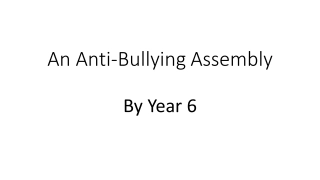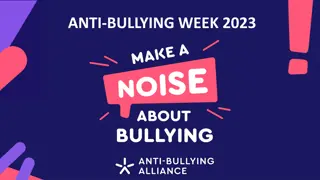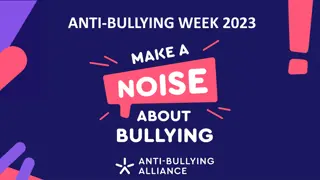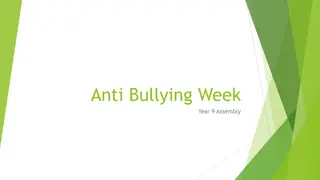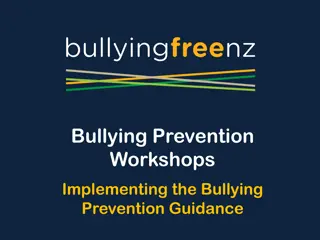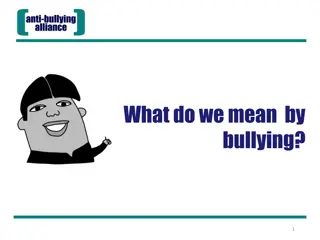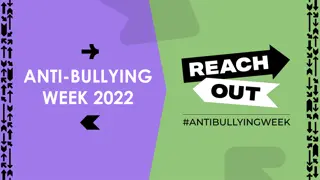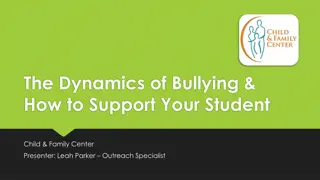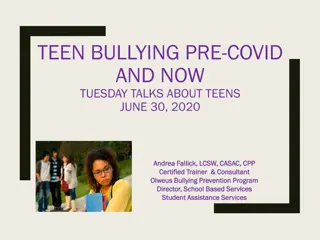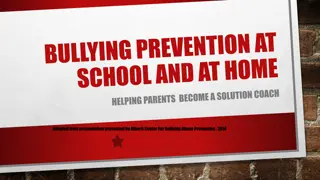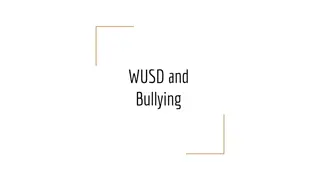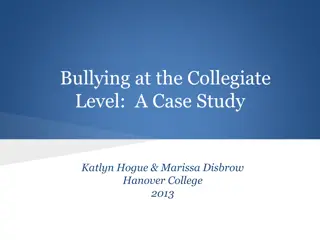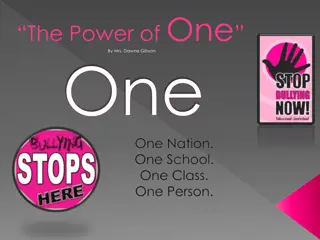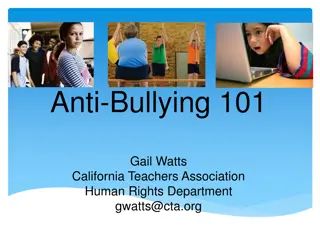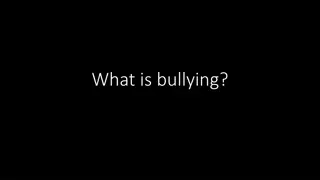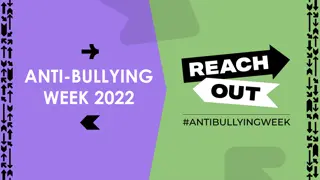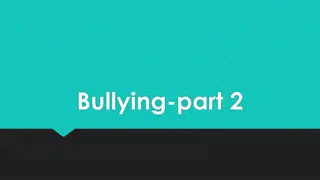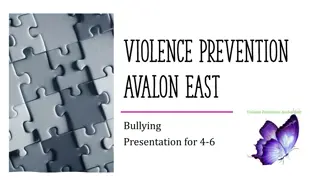Understanding Bullying: Types, Impact, and Prevention
Bullying is a serious issue affecting many individuals, especially in school settings. It can lead to devastating consequences such as drops in grades, convictions, and even suicides. The different types of bullying include physical aggression, social alienation, verbal aggression, intimidation, cyberbullying, and sexual harassment. Understanding the characteristics and impact of each type can help in identifying and addressing bullying behavior. Cyberbullying, in particular, poses unique challenges due to its anonymous nature and wide-reaching impact. Parents and educators play a crucial role in preventing bullying by being aware of online activities, monitoring children's online behavior, and teaching responsible online conduct.
Download Presentation

Please find below an Image/Link to download the presentation.
The content on the website is provided AS IS for your information and personal use only. It may not be sold, licensed, or shared on other websites without obtaining consent from the author. Download presentation by click this link. If you encounter any issues during the download, it is possible that the publisher has removed the file from their server.
E N D
Presentation Transcript
Whats the Big Deal? Bullying happens on an average of every 7 minutes on school playgrounds 60% male bullies will have 1 conviction by age 24 85% of the school population are bystanders Bullying is one of the leading causes of suicide >90% of victims grades will drop
What is Bullying? A person is being bullied when he or she is exposed, repeatedly and over time to negative actions on the part of one or more other persons. Olweus, 1992
Bullying is P=Purposeful (intentionally trying to hurt another person) I = Imbalance of power (bigger, older, part of a group) C = Continues (not a one time event; happens over time)
Normal Peer Conflict vs. Bullying Normal Peer Conflict Bullying Equal power or friends Imbalance of power; not friends Happens occasionally Repeated negative actions Accidental Purposeful Not serious Serious with threat of physical or emotional harm Equal emotional reaction Strong emotional reaction from victim and little or no emotional reaction from bully Not seeking power or attention Not trying to get something Seeking power, control, or material things Remorse -- will take responsibility No remorse -- blames victim Effort to solve the problem No effort to solve problems
Types of Bullying Physical Aggression Social Alienation Verbal Aggression Intimidation Cyber Bullying Sexual Harassment
What is Cyberbullying? Cyberbullying: the intentional and repeated harm of others through the use of computers, cell phones, and other electronic devices. Examples: mean text messages or emails, rumors sent by email or posted on social networking sites, embarrassing pictures, videos, websites, or fake profiles. Characteristics: Can be anonymous Impact can be wider reaching (speed and breadth of internet is damaging) Can be children who might not have otherwise engaged in bullying behavior (it is easier to be cruel when the bully is sheltered from target s responses)
Preventing Cyberbullying Be aware of what your kids are doing online Know the sites your kids visit and their online activities Have a sense of what they do online and in texts. Learn about the sites they like. Try out the devices they use Ask to friend or follow your kids on social media sites or ask another trusted adult to do so Establish Rules about technology use Be clear about what sites they can visit and what they are permitted to do when they re online Help them be smart about what they post or say. Tell them not to share anything that could hurt or embarrass themselves or others
Warning Signs Sudden change in school attendance/academic performance Difficulty concentrating in class Lonely, withdrawn, isolated Poor or no social/interpersonal skills Frequent complaints of headaches, pains, etc
What Can Parents Do? Ask your child for specifics Listen Contact the school as soon as possible Avoid confronting the other student s parents Arrange for your child to join social groups, team sports, clubs or organizations that meet his/her interests
Future of the Trend Old Attitude New Attitude Not my problem Everyone s responsibility Everyone is responsible for dealing with bullying - students, staff, parents and community members.


